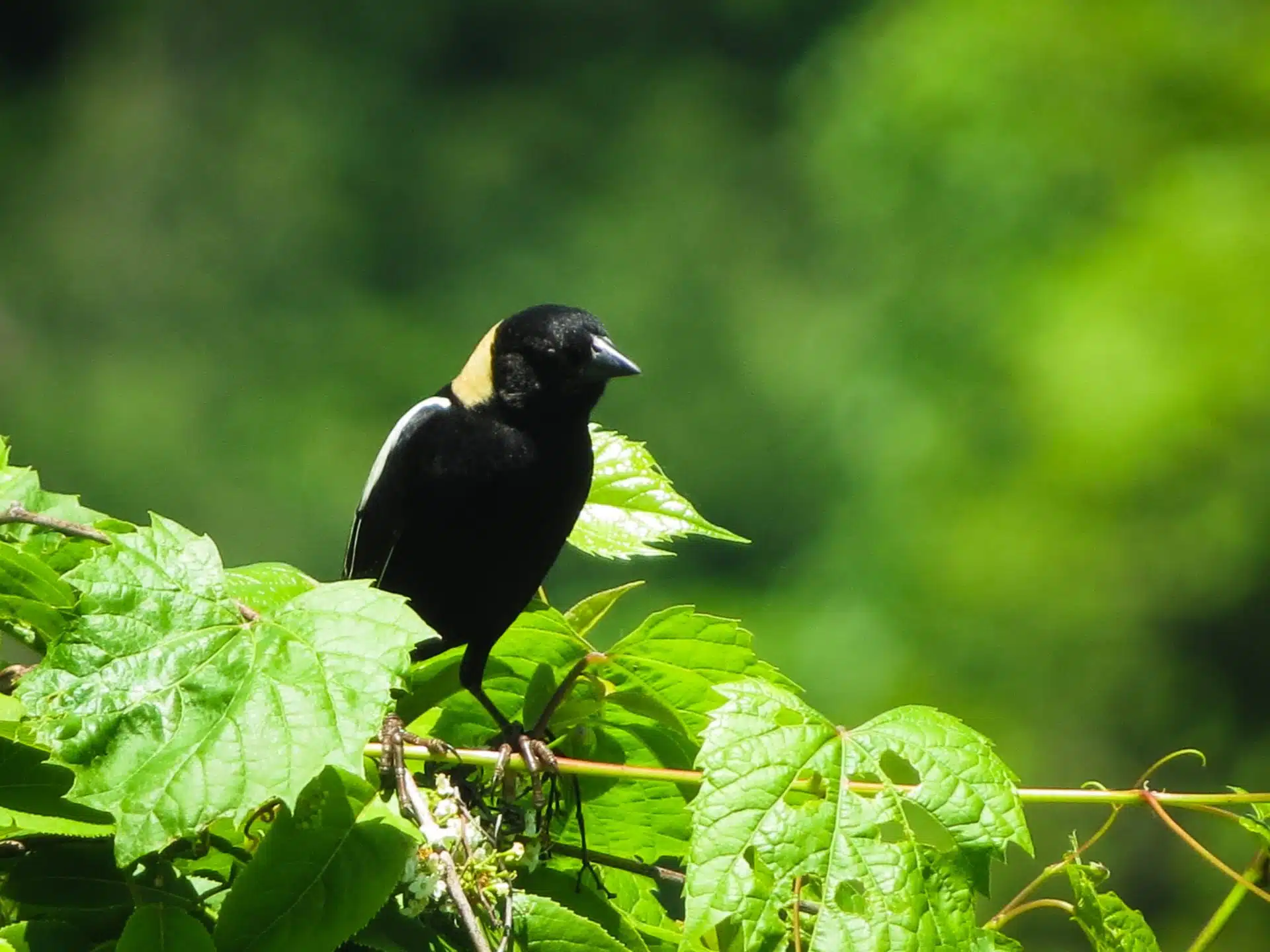Nature Profile
Birds
Bobolink
Dolichonyx oryzivorus

Bobolink
Voice: Song a rolling, bubbling, clanking series of notes; given in flight. Call a harsh "chek." Flight note
a clear "pink.
Commonly referred to as a skunk bird, the male bobolink is the only American bird that is black
underneath and white on back. William Cullen Bryant in his poem Robert of Lincoln, described
the male bobolink as “Wearing a bright black wedding-coat; White are his shoulders and white
his crest.” The vivid markings of the male attract the attention of females while performing his
displays during courtship. The female is less descriptive and resembles a large sparrow. These
markings enable her to blend into the nesting grass habitat. The bobolink is one of the few
songbirds that undergo two complete molts each year, completely changing its feathers on both
the breeding and wintering grounds.
In both breeding and wintering areas, bobolinks prefer tall grassy meadows, pastures and
hayfields. They glean for insects on the ground and low vegetation and eat various types of
seeds. Although the bobolink typically feeds during the day, in migration, it has been seen eating
in rice fields after dark on bright nights. Despite eating rice in the south, the bobolinks are
thought to be more beneficial than harmful since most of the insects the bobolinks eat during the
breeding season are harmful to crops. Also the majority of the plant material eaten by bobolinks
consists of weed seeds or seeds of plants that are of no commercial value. None the less,
bobolinks have been shot as an agricultural pest on wintering grounds.
Bobolinks are polygamous breeders. Some males may have up to four females nesting
simultaneously in their 10-30 acre territory. Bobolink nests are often placed in areas of
maximum vegetative height and density. The female will make her nest on the ground, the outer
wall composed of dead grass and the inside lining of fine grass or sedges. She lays 4-6 eggs. The
eggs are usually a pale reddish-brown with irregular dark splotches. Females usually lay one
clutch a year, but have been known to rebuild nests and lay eggs if the first nest is lost.
After the breeding season in Ohio bobolinks are extraordinary migrant, traveling to south of the
equator by November and making a round-trip of up to 9,000 miles. They migrate to the
grasslands of southwestern Brazil, Paraguay, and northern Argentina. Most of the bobolinks
return around mid in May. Shrinking nesting habitat and detrimental hay-cropping practices,
combined with being shot at or trapped for sale on the southern range, is making life increasingly
difficult for bobolinks. Bobolinks are declining over much of their range.
Want to help the Bobolink? Urge local parks, landowners and farmers to learn about best
management practices for grasslands and hayfields birds, which include nesting and mowing
schedules. For more information about grassland birds in fields and on farms go to
http://scnyat.cce.cornell.edu/grassland.
Best Location to View: Strong Acres
Color: Black, Brown, White, Yellow
Range: Canada, North America
Size: Small




